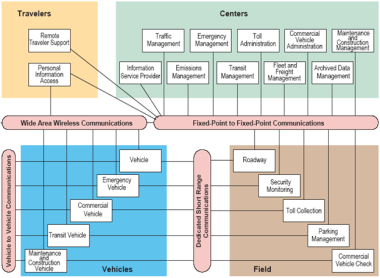
ITS Architecture provides a visual framework for conceptualizing the interplay of various Intelligent Transportation Systems (ITS) structures by identifying the physical entities – such as centers, travelers, vehicles and field elements – and linking them according to their communications methodologies and technologies. DVRPC oversees the Regional ITS Architecture for the Delaware Valley.
Please contact Chris King at cking@dvrpc.org if you are interested in learning more or have questions about the program.